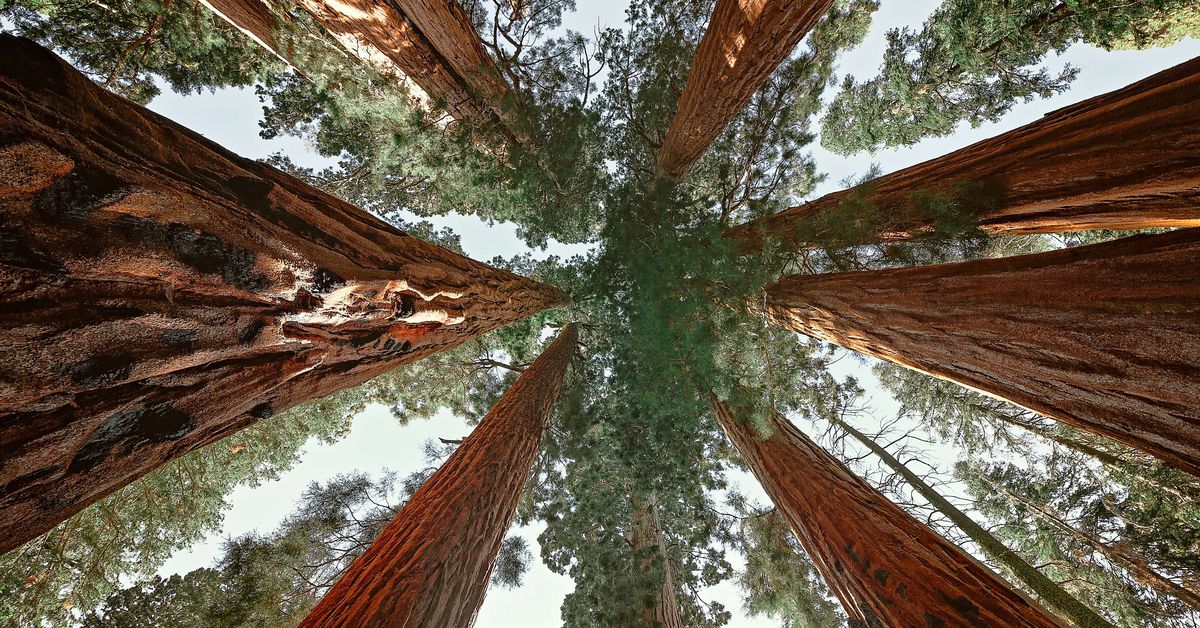The math isn’t adding up on forests and CO2 reductions
Source: The Verge added 30th Apr 2021More evidence surfaced this week that shows that forests are struggling to do humans’ dirty work when it comes to climate change. Although companies and countries are increasingly relying on forests to draw down their planet-heating carbon dioxide emissions, the math isn’t adding up to show big benefits.
California might have oversold the success of carbon offsets used in its cap-and-trade system, which is often billed as one of the world’s most successful market-based mechanisms to tackle climate change. The system appears to be failing because California is actually overcounting how much carbon dioxide forests keep out of the atmosphere, according to a new study by nonprofit CarbonPlan, that’s still under peer review, and reporting by ProPublica and MIT Technology Review. (One of the authors, James Temple, was previously a senior director at The Verge.)
That finding follows research published earlier this week in the journal Nature Climate Change that found a giant discrepancy between how much climate pollution countries officially reported and how much pollution independent models calculated for them. In this case, forests mucked up the numbers because countries are attributing more carbon reductions to their forests than independent models do.
Trees do provide a crucial service for people and the planet by “breathing in” and storing carbon dioxide. So protecting forests is important for their health and ours. But schemes devised to sell forests’ carbon storage to polluters as a way to cancel out their emissions haven’t always resulted in the CO2 reductions they’re supposed to achieve. Ultimately, that lets those polluters off the hook instead of pushing them to do more in the race to prevent a deeper climate crisis.
In the US, forest owners can sell their land’s ability to store carbon as “credits” to polluters. Since California sets a cap for how much CO2 pollution industries generate, companies can purchase those credits to cancel out some of their emissions and stay below the cap (with each credit representing one metric ton of CO2). But up to 39 million credits, nearly a third in the state’s program, didn’t actually provide the climate benefits they were supposed to, according to the new analysis by CarbonPlan.
That’s because the state was using averages to estimate how much CO2 each parcel of forest could hold. In reality, some pieces of forest can store more than others based on what kinds of trees are there and how dense the forest is. Forest managers also “gamed the system” by selling credits from parcels that inflated how much carbon they stored, ProPublica and MIT Technology Review reported.
The California Air Resources Board disputes the study’s findings, which are still undergoing peer review. “We were not given sufficient time to fully analyze an unpublished study and are not commenting further on the authors’ alternative methodology,” a spokesperson for the Air Resources Board wrote to ProPublica and MIT Technology Review. (This isn’t the first time California’s cap-and-trade system has come under scrutiny. Previous research found that some “economically disadvantaged neighborhoods” near regulated facilities experienced higher rates of pollution after the carbon trading system began.)
Discrepancies in carbon accounting due to forests show up globally, too, according to the Nature Climate Change study. There was a 5.5 billion ton difference between the amount of carbon dioxide emissions nations report each year and what independent models calculated. That’s a big gap, nearly as much as the US’s net emissions in 2019. It boils down to the way the US and other countries count up carbon caught by their forests, which doesn’t match up with the methods other researchers use. The lack of standardized reporting across the board for countries and scientists could throw a wrench in global efforts to curb greenhouse gas emissions. It’s hard to make progress if everyone’s taking different measurements.
What’s more, countries that are big polluters and that have a lot of forests, like the US, can lean on that asset more than countries without as much forest cover, The Washington Post writes. Countries like the US use forests to subtract emissions, and they end up reporting a smaller “net” footprint as a result. That can make it look like they’ve made bigger environmental gains even if they’re still polluting a lot.
If the US didn’t count on forests and other land ecosystems to offset some 12 percent of its emissions, its carbon footprint would actually be much higher. “We are lucky to have those natural carbon sinks,” Christopher Williams, a professor at Clark University, told The Washington Post. “However, that carbon uptake is a freebie from nature for which we do not really get to take credit in our battle against climate change.”
Despite the risks that come with relying on those freebies, it’s getting trendier than ever to invest in forest-based climate solutions. YouTubers and the World Economic Forum have launched feel-good tree-planting initiatives. Tech companies like Microsoft that have made commitments to become carbon “neutral” or carbon “negative” say that they’ll draw down at least as many emissions as they release — and are relying heavily on trees to do that. But trees can only do so much — and, if the results of these studies hold up, perhaps much less than people previously thought they could.
brands: Carbon Crucial First It LUCKY Microsoft Million New One other Planet Reality Solutions Trading WAS media: 'The Verge' keywords: Review
Related posts
Notice: Undefined variable: all_related in /var/www/vhosts/rondea.com/httpdocs/wp-content/themes/rondea-2-0/single-article.php on line 88
Notice: Undefined variable: all_related in /var/www/vhosts/rondea.com/httpdocs/wp-content/themes/rondea-2-0/single-article.php on line 88
Related Products
Notice: Undefined variable: all_related in /var/www/vhosts/rondea.com/httpdocs/wp-content/themes/rondea-2-0/single-article.php on line 91
Warning: Invalid argument supplied for foreach() in /var/www/vhosts/rondea.com/httpdocs/wp-content/themes/rondea-2-0/single-article.php on line 91
